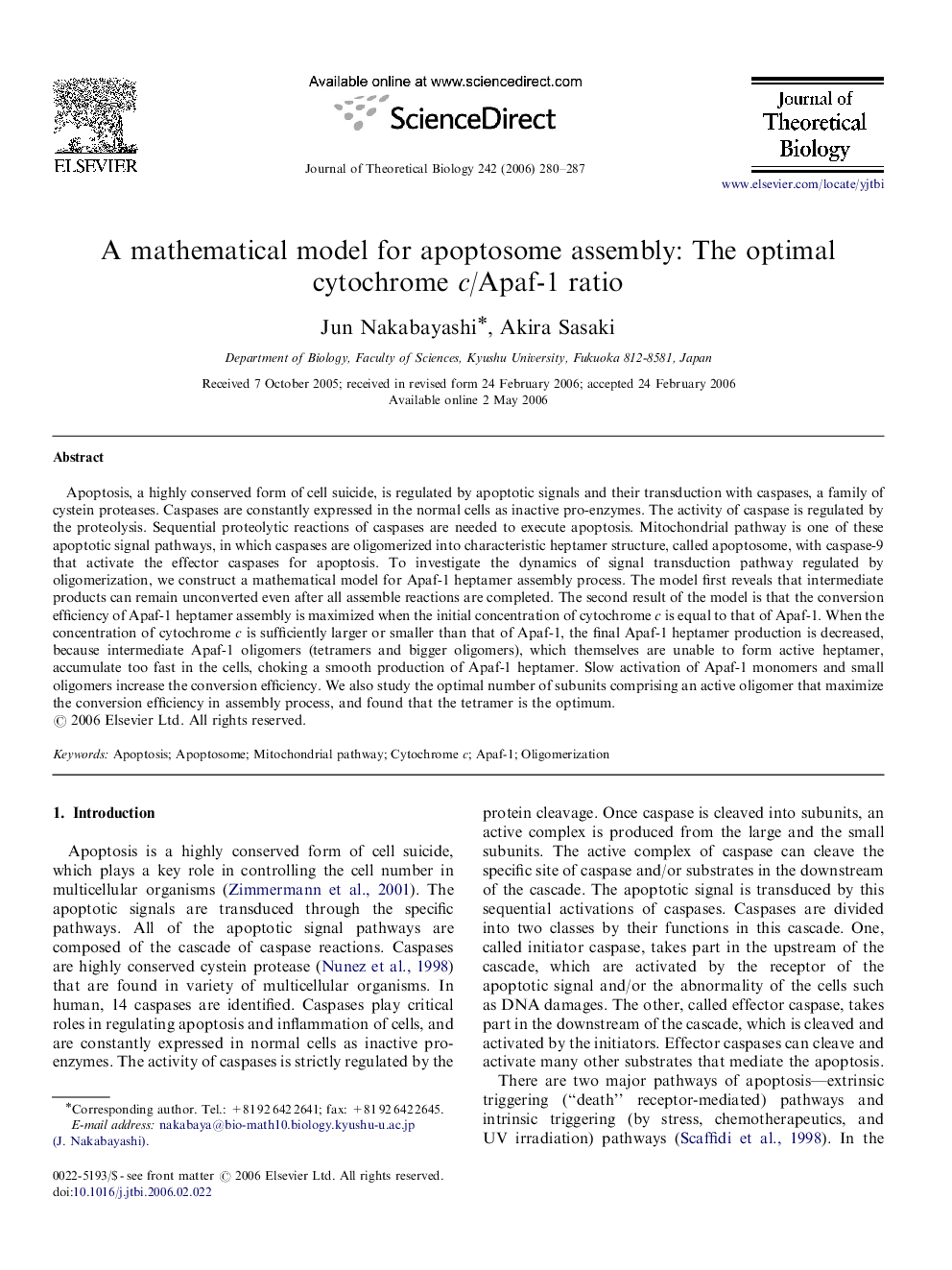| Article ID | Journal | Published Year | Pages | File Type |
|---|---|---|---|---|
| 4499370 | Journal of Theoretical Biology | 2006 | 8 Pages |
Apoptosis, a highly conserved form of cell suicide, is regulated by apoptotic signals and their transduction with caspases, a family of cystein proteases. Caspases are constantly expressed in the normal cells as inactive pro-enzymes. The activity of caspase is regulated by the proteolysis. Sequential proteolytic reactions of caspases are needed to execute apoptosis. Mitochondrial pathway is one of these apoptotic signal pathways, in which caspases are oligomerized into characteristic heptamer structure, called apoptosome, with caspase-9 that activate the effector caspases for apoptosis. To investigate the dynamics of signal transduction pathway regulated by oligomerization, we construct a mathematical model for Apaf-1 heptamer assembly process. The model first reveals that intermediate products can remain unconverted even after all assemble reactions are completed. The second result of the model is that the conversion efficiency of Apaf-1 heptamer assembly is maximized when the initial concentration of cytochrome cc is equal to that of Apaf-1. When the concentration of cytochrome cc is sufficiently larger or smaller than that of Apaf-1, the final Apaf-1 heptamer production is decreased, because intermediate Apaf-1 oligomers (tetramers and bigger oligomers), which themselves are unable to form active heptamer, accumulate too fast in the cells, choking a smooth production of Apaf-1 heptamer. Slow activation of Apaf-1 monomers and small oligomers increase the conversion efficiency. We also study the optimal number of subunits comprising an active oligomer that maximize the conversion efficiency in assembly process, and found that the tetramer is the optimum.
